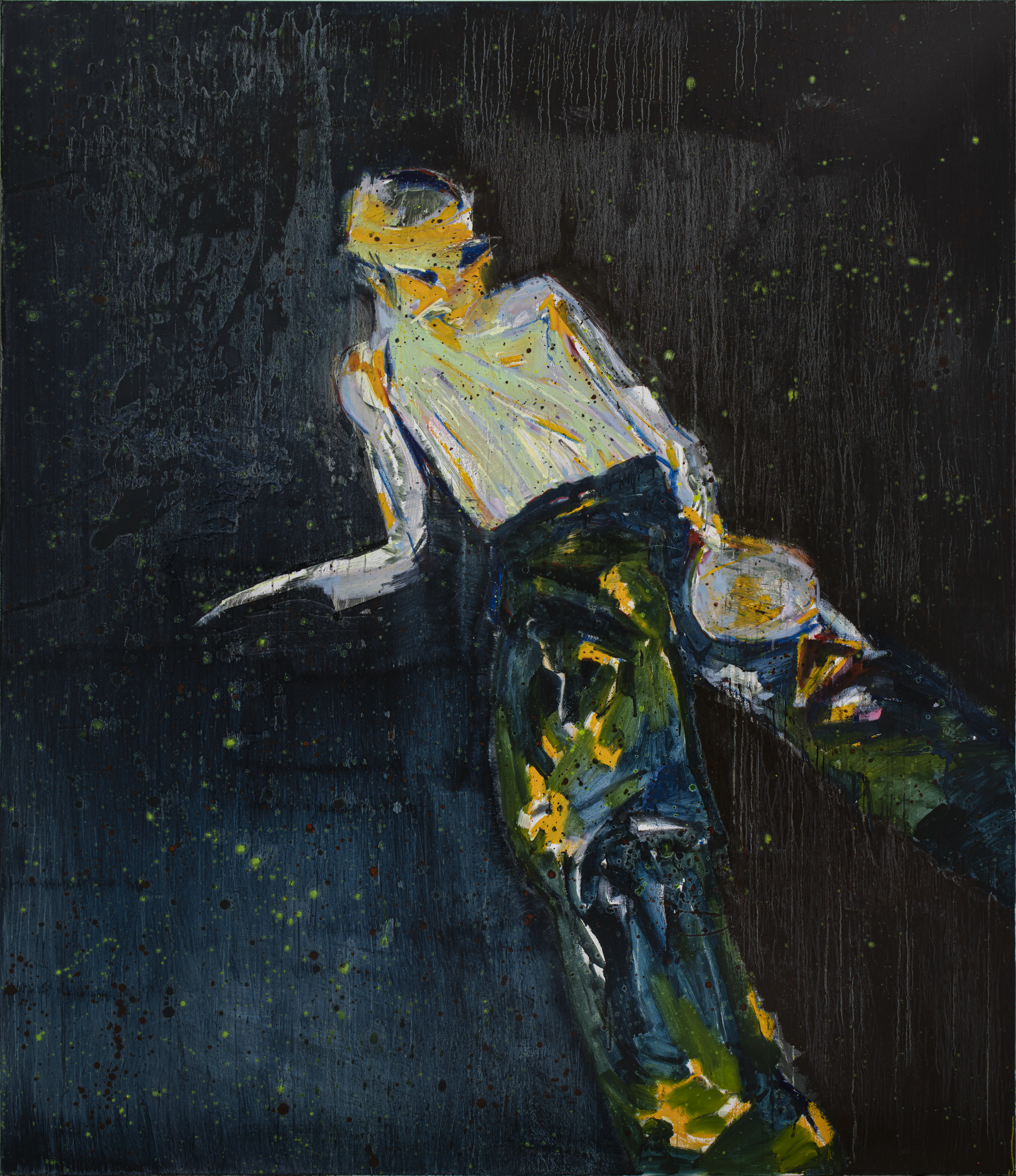Bystanders, Youth
— Project Bystanders
Tetraptych
2024
Oil and Pigment Bar on Linen
220 x 760
cm
Courtesy of the Artist, Berlin
Case Study: Youth (2024)
Youth (220 x 190 cm each, four panels totaling 220 x 760 cm, Pigment Bar on Linen) marks a significant evolution in Han's exploration of indeterminacy as aesthetic and ethical principle. This quadriptych from the Bystanders series presents a single figure in a tank top across four canvases, each capturing a different gesture that flows into the next, creating what the artist describes as a "circular visual narrative."
The title "Youth" functions not thematically but metaphorically. Youth here signifies not an age category but a condition of perpetual threshold, of unresolved becoming. Each of the four panels captures this suspension: the figure is neither fully present nor absent, neither completely formed nor dissolved.
This work radicalizes Han's earlier strategies of anonymization. Where the Passersby series erased facial features to create universal particularity, Youth maintains the distortion itself as content. The incomplete hands—that fundamental tool of human making and grasping—suggest not just individual uncertainty but a generation's fraught relationship to agency itself. In an era of climate crisis, political polarization, and systemic precarity, the inability to fully form even the gesture of reaching becomes profoundly symptomatic.
The quadriptych format amplifies this exploration of indeterminacy. Unlike traditional polyptychs that narrate progression or contrast, Han's four panels refuse linear reading. [...]
사례 연구: 《Youth》 (2024)
《Youth》 (각 220 x 190 cm, 네 패널 총 220 x 760 cm, 린넨에 피그먼트 바)는 미학적이고 윤리적 원리로서의 불확정성에 대한 한재열의 탐구에서 중요한 진화를 보여준다. 《Bystanders》 시리즈의 이 사폭화는 탱크톱을 입은 단일 인물을 네 개의 캔버스에 걸쳐 제시하며, 각각은 다음으로 흘러가는 다른 제스처를 포착하여 작가가 "순환적 시각 서사"라고 묘사하는 것을 만든다.
"Youth"라는 제목은 주제적으로가 아니라 은유적으로 기능한다. 여기서 젊음은 연령 범주가 아니라 영구적 문턱의 조건, 미해결된 되기를 의미한다. 네 패널 각각은 이러한 유예를 포착한다: 인물은 완전히 현존하지도 부재하지도 않으며, 완전히 형성되지도 해체되지도 않았다.
이 작품은 한재열의 초기 익명화 전략을 급진화한다.
《Passersby》 시리즈가 보편적 특수성을 창조하기 위해 안면 특징을 지웠다면, 《Youth》는 왜곡 자체를 내용으로 유지한다. 불완전한 손들—인간의 만들기와 잡기의 근본적 도구—은 개인적 불확실성뿐만 아니라 한 세대의 행위주체성 자체와의 곤란한 관계를 암시한다. 기후 위기, 정치적 양극화, 구조적 불안정의 시대에, 손 뻗기의 제스처조차 완전히 형성할 수 없는 무능력은 심오하게 징후적이다.
사폭화 형식은 이러한 불확정성의 탐구를 증폭시킨다. 진행이나 대조를 서사하는 전통적인 다폭화와 달리, 한재열의 네 패널은 선형적 읽기를 거부한다. [...]








